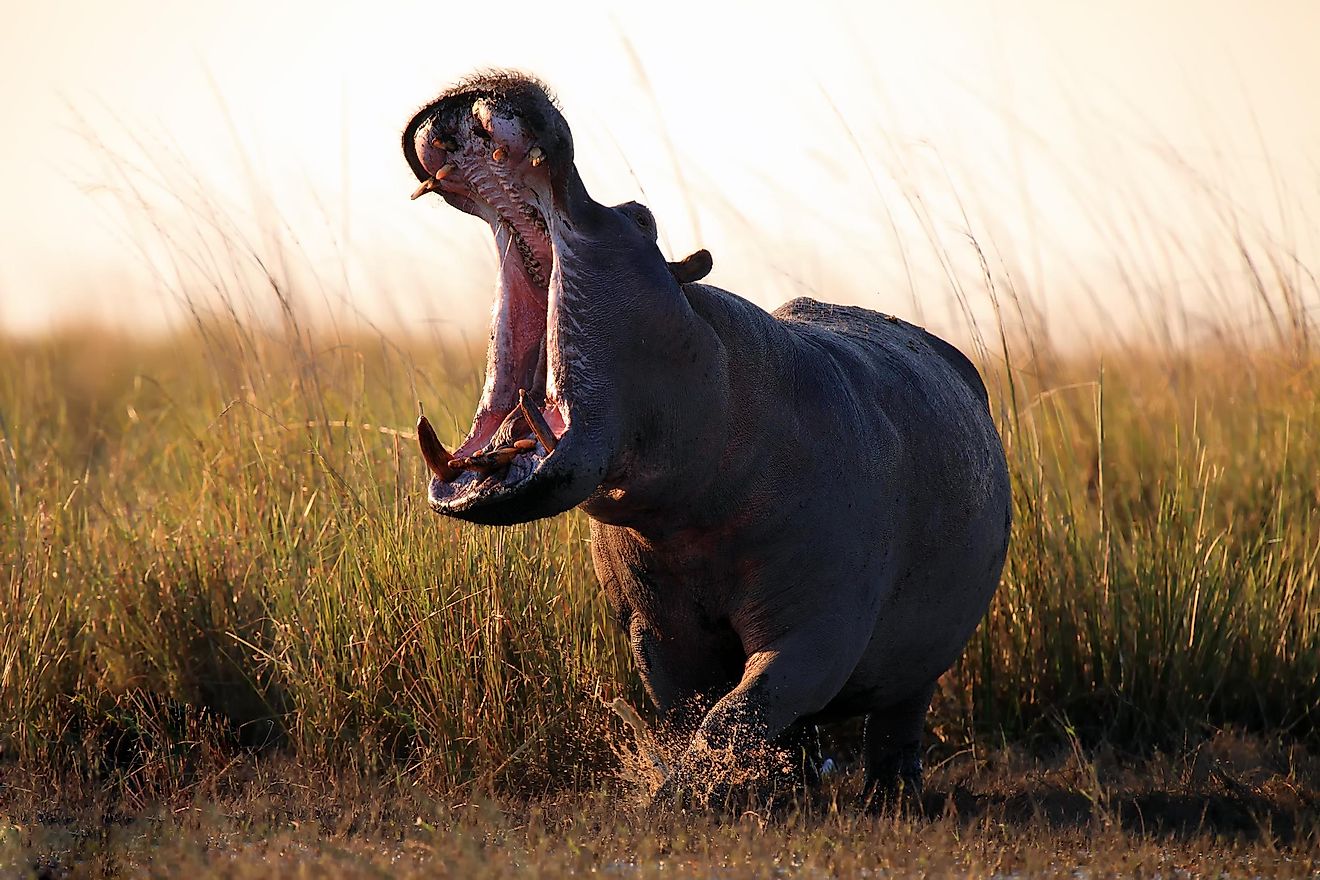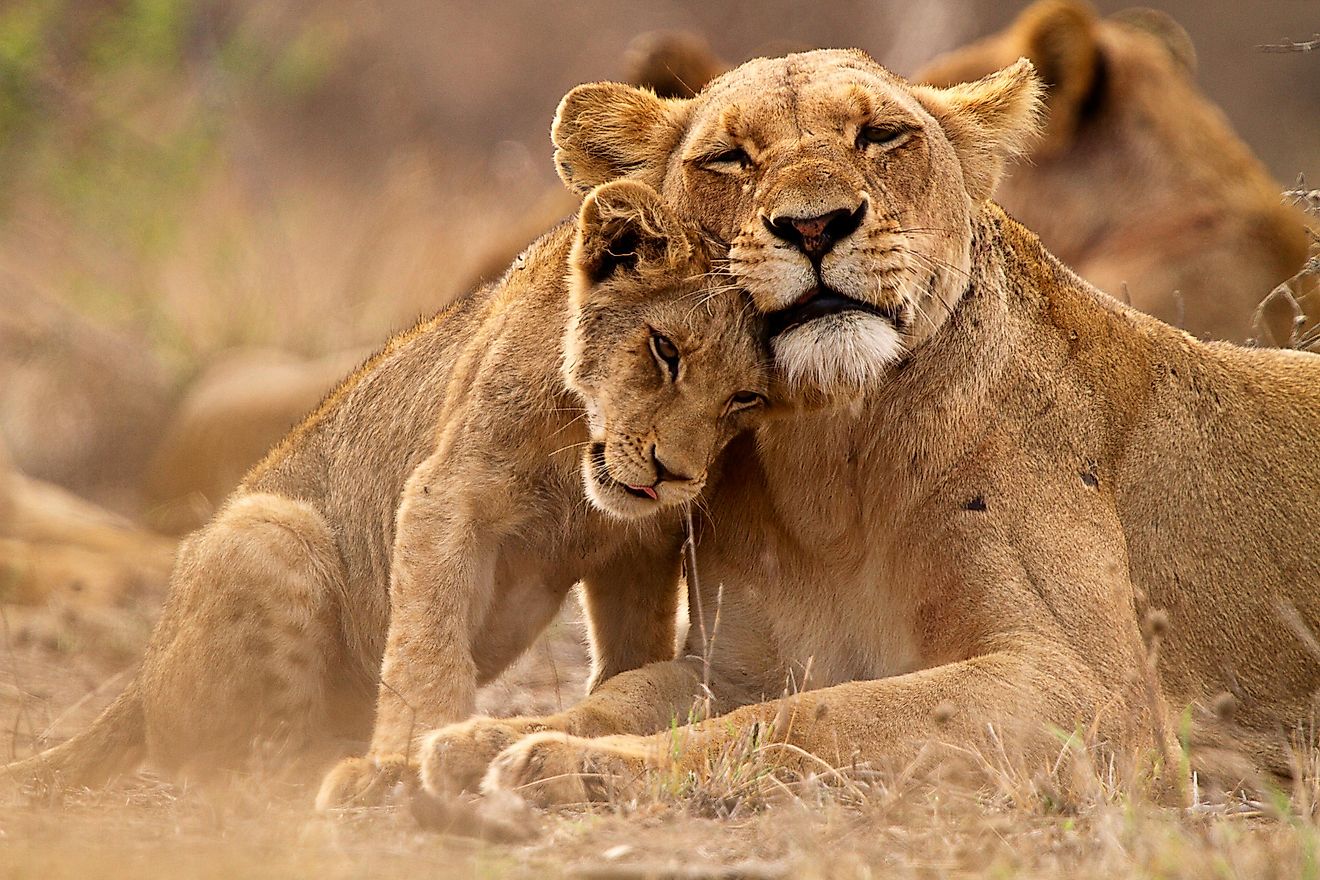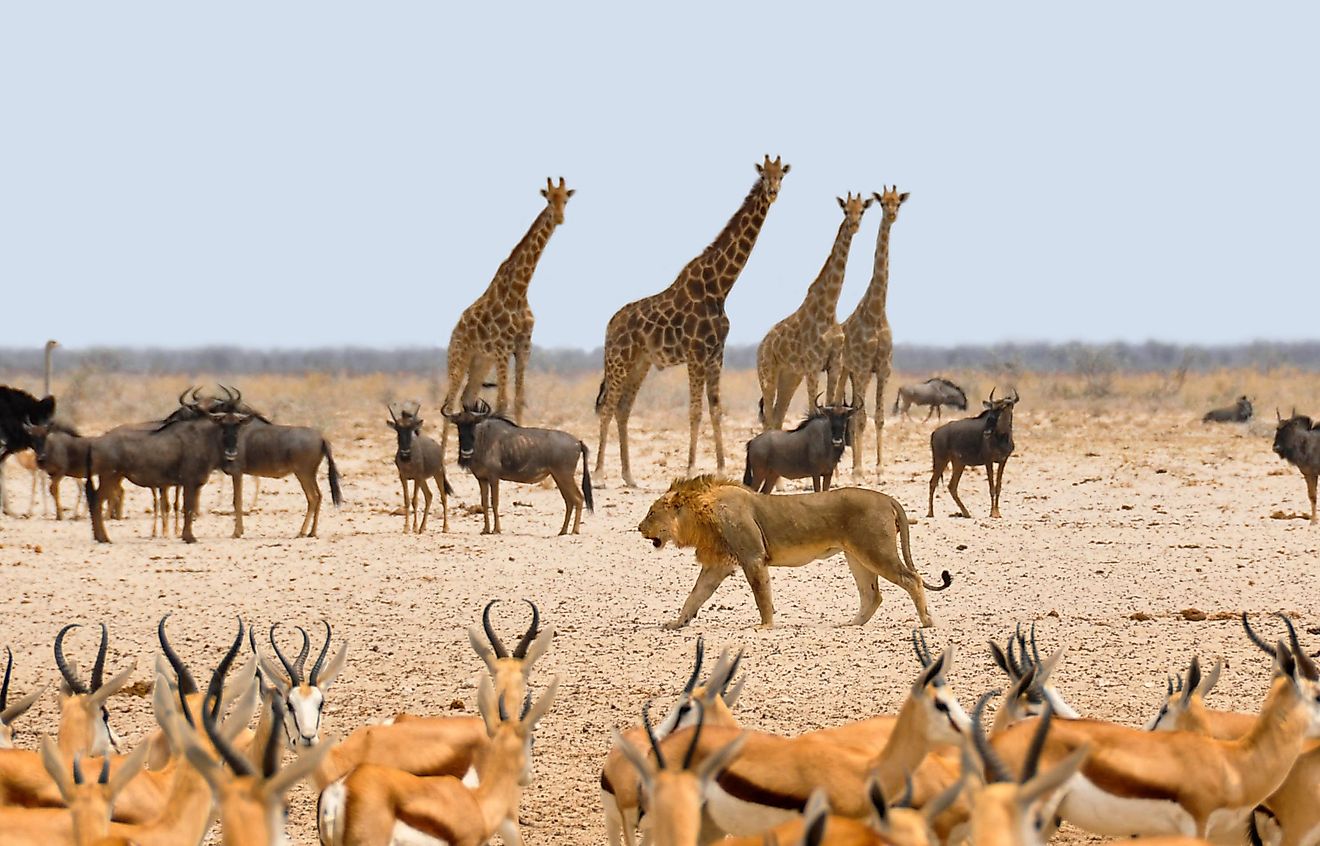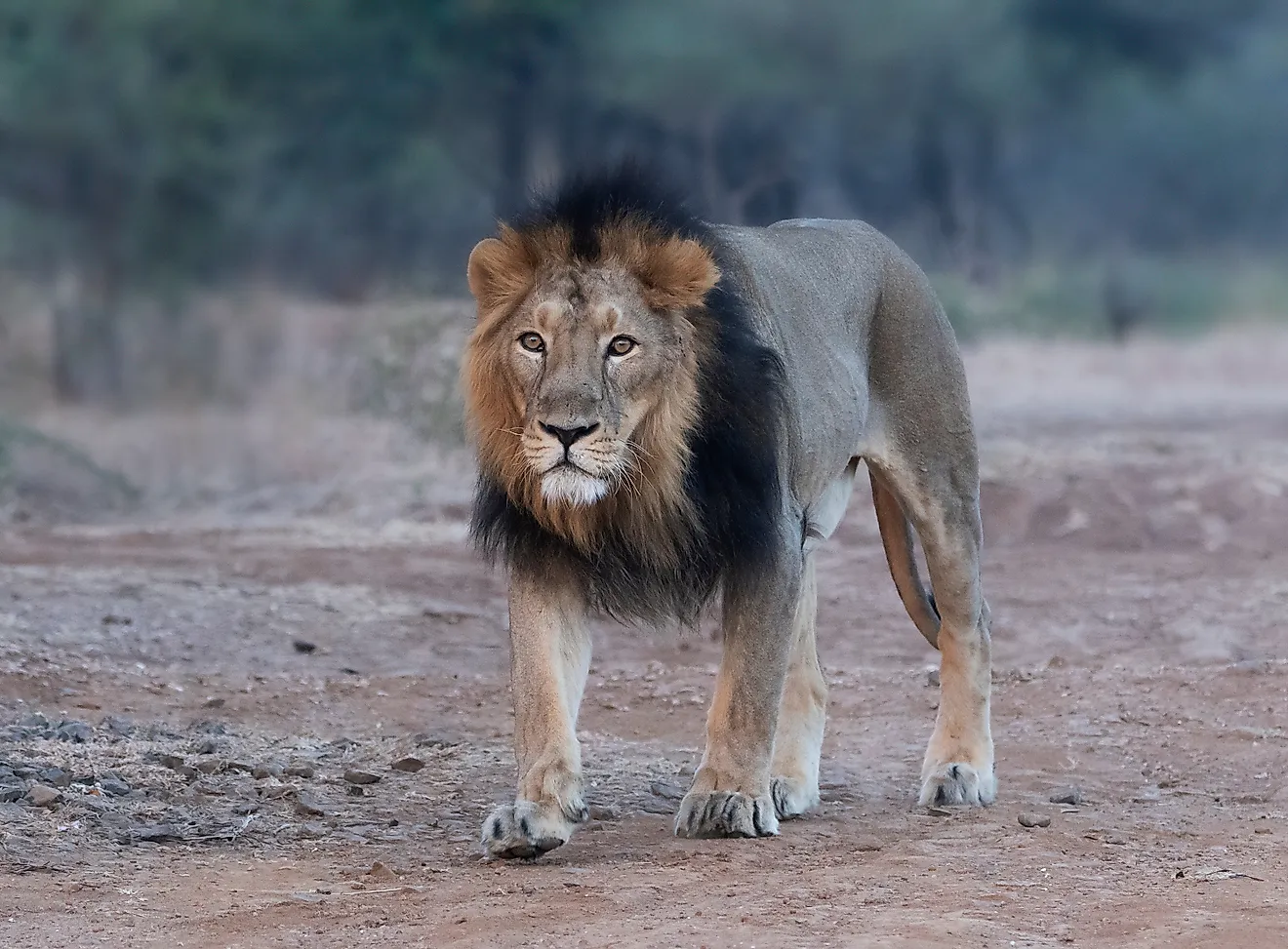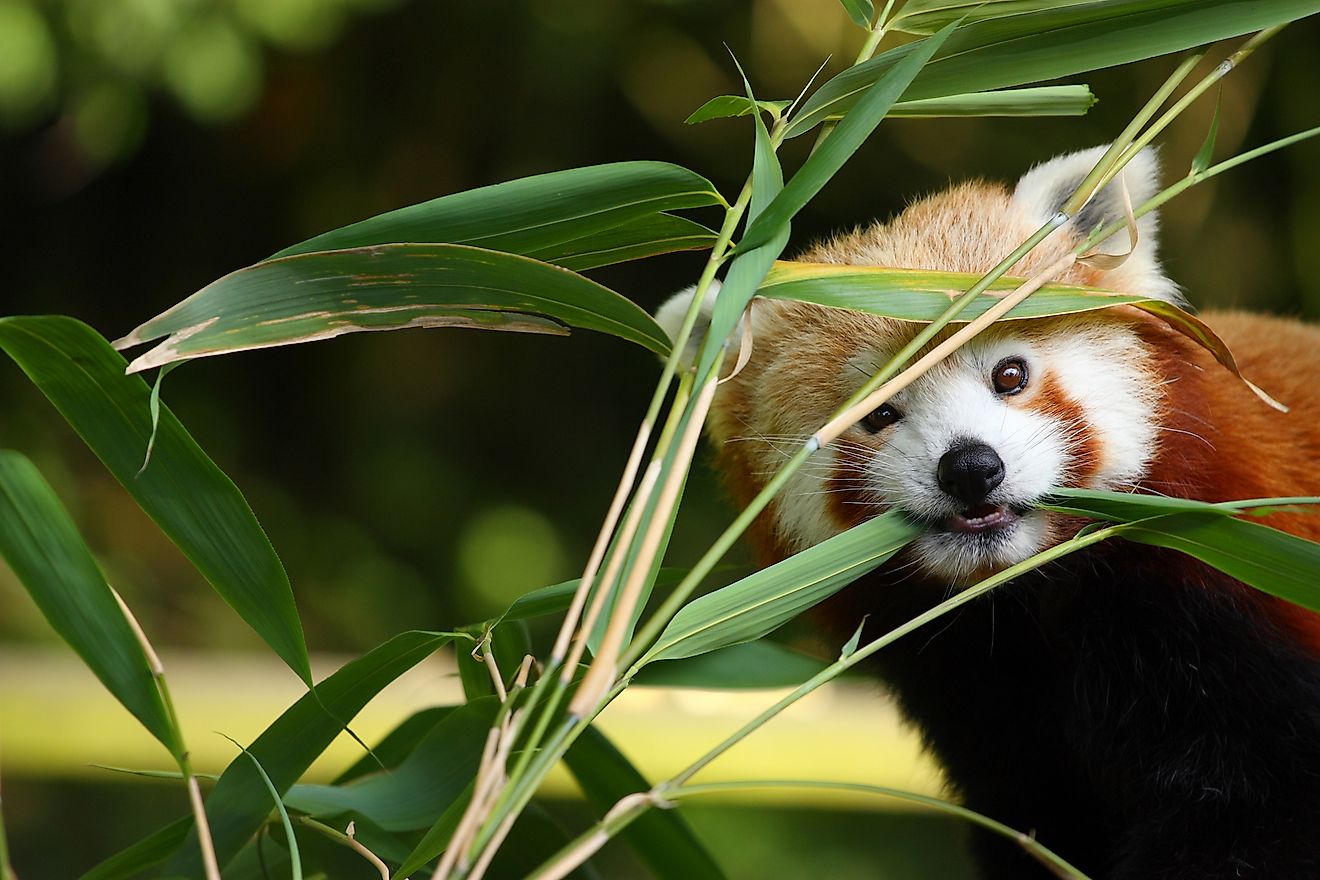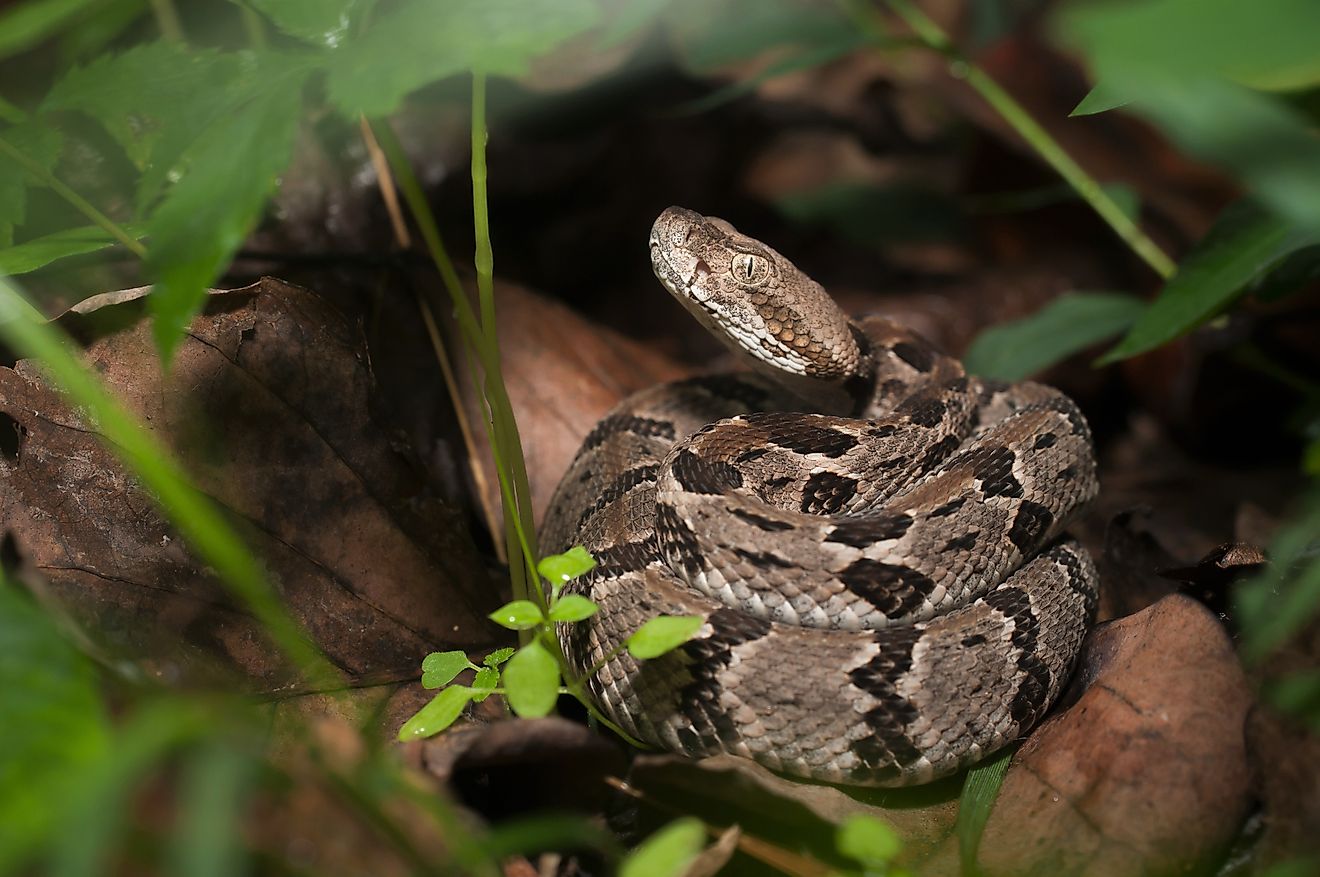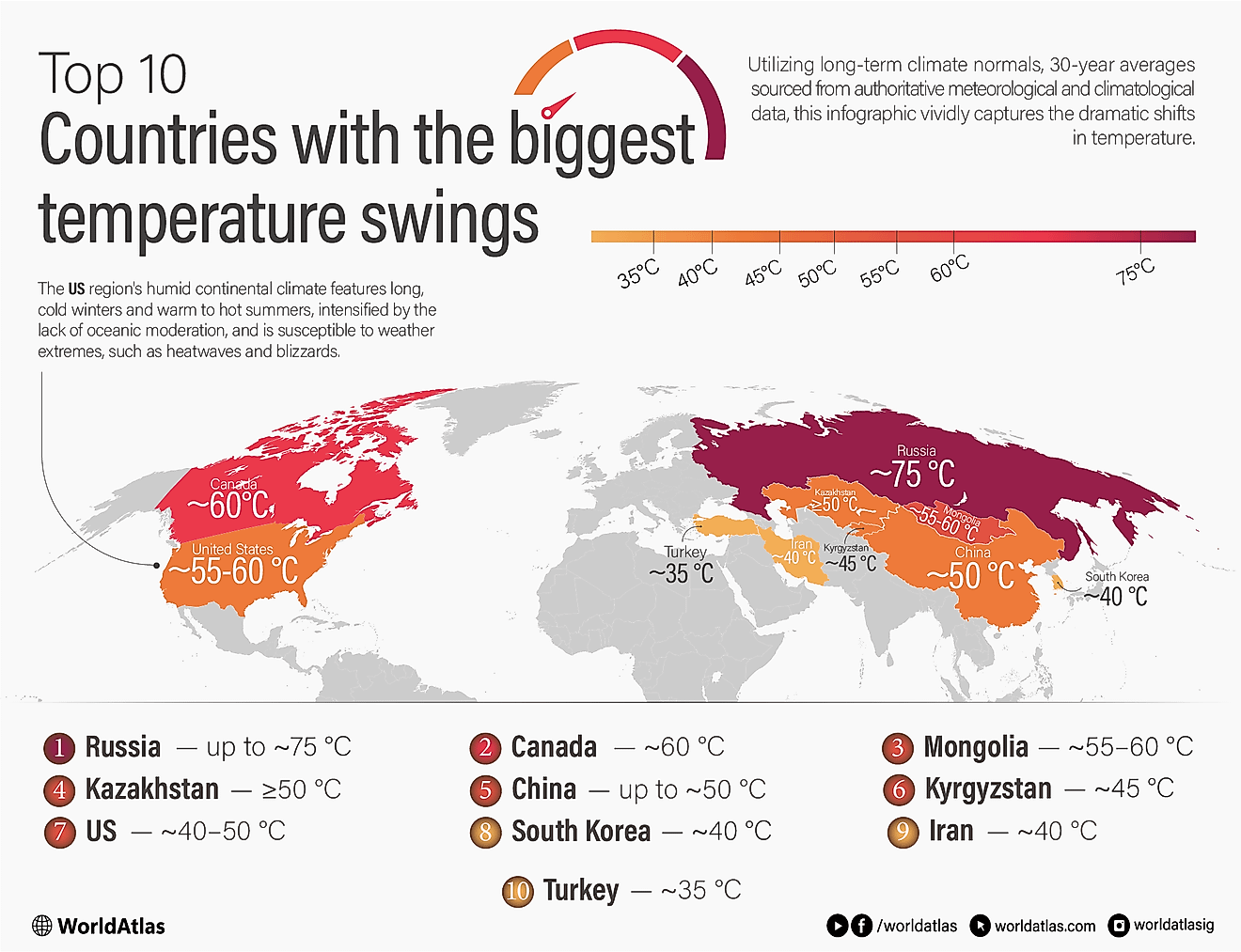
Animals That Live in the Tundra
The tundra is a cold, treeless biome characterized by low temperatures and brief growing seasons, restricting plant life to low shrubs, grasses, mosses, and lichens, often anchored in permafrost. Typically, scientists identify three primary types:
- Arctic tundra in the far Northern Hemisphere
- Alpine tundra found above the tree line on high mountains
- Antarctic tundra located on parts of the Antarctic Peninsula and nearby islands
Each type supports animals adapted to cold, wind, and brief summers. The examples below showcase some mammals and birds that inhabit Arctic, alpine, and Antarctic tundra regions globally.
Mountain Goat (Oreamnos americanus)
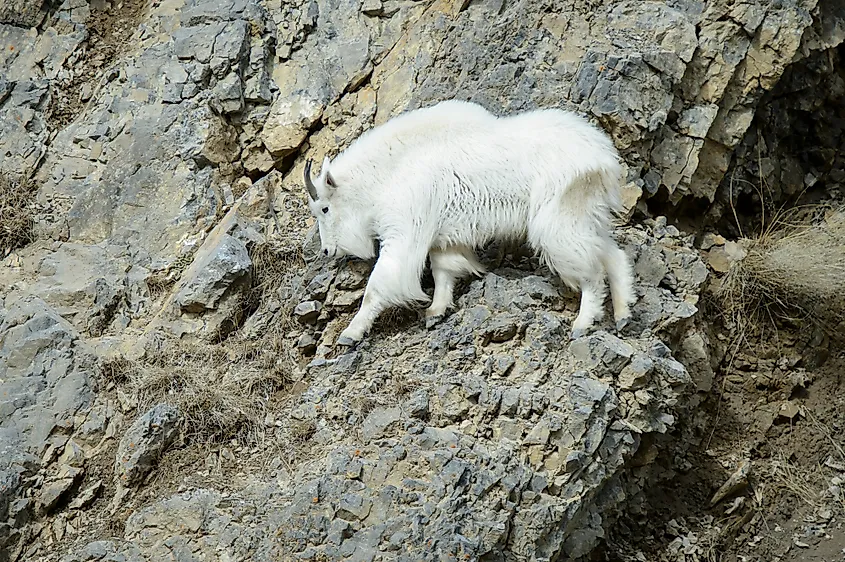
Mountain goats live in the alpine tundra of northwestern North America, including high elevations of the Rockies, the Cascades, and coastal mountain ranges. Although not true goats, they are built for steep, exposed terrain with muscular bodies, specialized hooves, and dense white coats that insulate them against wind and cold. They spend summers above the tree line and shift to lower elevations in winter where forage is more accessible.
Caribou / Reindeer (Rangifer tarandus)
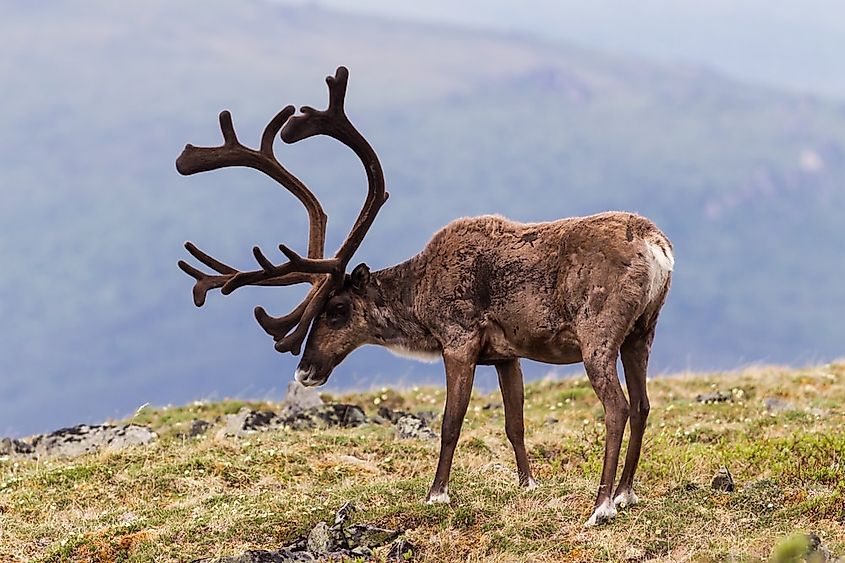
Caribou in North America and reindeer in Eurasia are the main large herbivores of the Arctic tundra. They mainly feed on lichens, sedges, and dwarf shrubs that grow on open plains. Many herds migrate hundreds of miles annually to follow seasonal food sources. Their wide hooves enable them to walk across snow and soft ground, and their sharp sense of smell helps them find lichens under the winter snow. Caribou serve as essential prey for wolves and bears and play a vital role in nutrient cycling within tundra ecosystems. For thousands of years, indigenous communities across the Arctic have depended on them for food, clothing, and cultural practices.
Marmot (Genus Marmota)

Several marmot species live in alpine tundra, including the Alaska marmot, hoary marmot, and yellow-bellied marmot. These rodents occupy high-elevation slopes with short growing seasons, where they feed on grasses, flowers, and other low-lying plants. Marmots avoid winter conditions by hibernating in deep burrows for much of the year, a key adaptation for surviving tundra climates with long periods of frost and limited vegetation. Their burrowing activity helps aerate soil and influences plant communities in alpine tundra ecosystems.
Arctic Hare (Lepus arcticus)
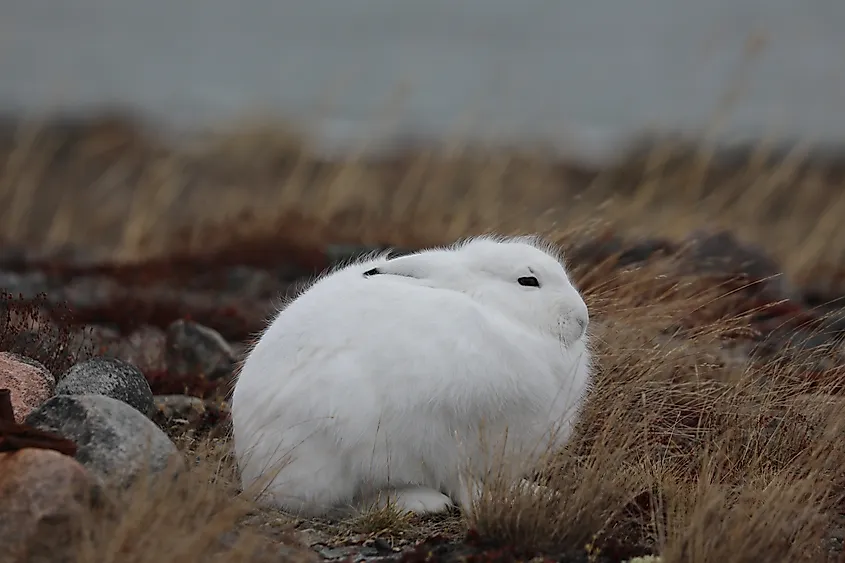
The Arctic hare lives across the tundra of Greenland and northern Canada, where it survives extreme cold, strong winds, and long winter nights. It feeds on lichens, mosses, and low woody shrubs that grow on exposed tundra ground. The hare’s compact body shape, thick fur, and seasonal white coat help it conserve heat and avoid predators in open terrain. Arctic hares dig shelters in snow during storms and can reach high speeds to escape Arctic foxes, wolves, and birds of prey.
Lemming (Family Cricetidae)
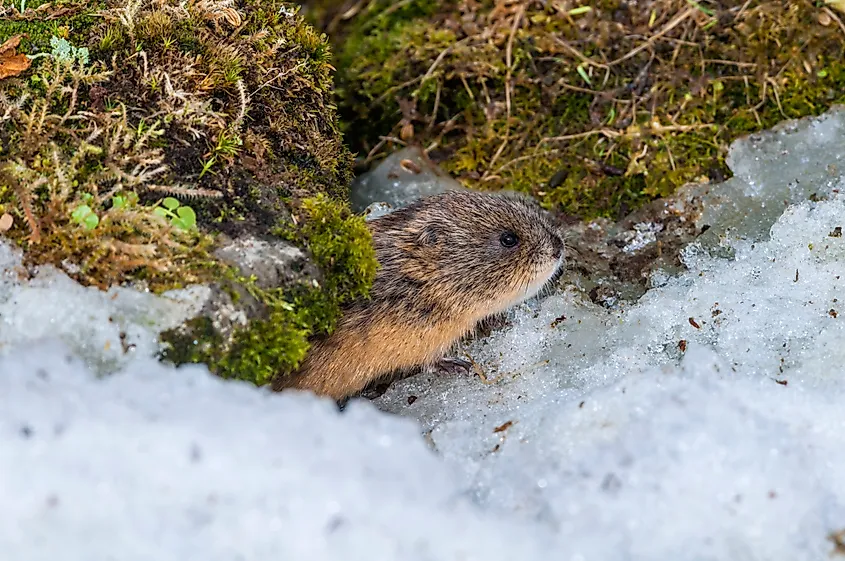
Lemmings are small rodents that live across the Arctic tundra of Alaska, Canada, Scandinavia, and Siberia. They spend winters beneath the snowpack in a network of tunnels where they feed on grasses, sedges, and mosses protected from the cold. Lemming populations rise and fall in multi-year cycles, and these fluctuations strongly influence tundra predators such as Arctic foxes, snowy owls, and stoats. Their ability to stay active year-round and survive on low-growing tundra plants makes them one of the most important herbivores in Arctic ecosystems.
Pika (Genus Ochotona)

Pikas are small alpine mammals that live in talus slopes above the tree line in the mountain ranges of western North America and parts of Alaska and the Yukon. They occupy alpine tundra habitats with short summers, where they gather grasses and wildflowers into “haypiles” that serve as their winter food. Because they do not hibernate, pikas rely on these stored plants and the cool microclimates of rock fields to survive long, cold seasons. Their sensitivity to warm temperatures makes them closely tied to the cold conditions of alpine tundra.
Yak (Bos grunniens and Bos mutus)
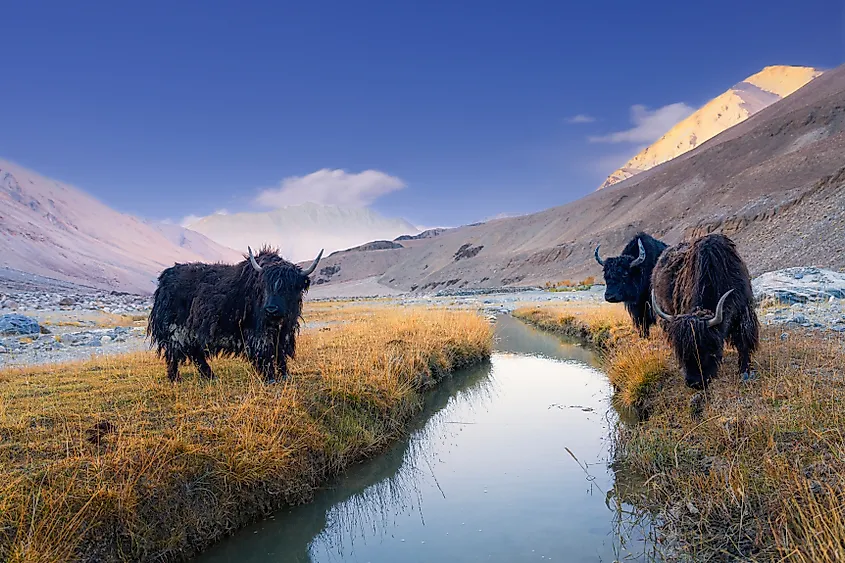
Yaks live on the high-elevation alpine tundra of the Tibetan Plateau and surrounding Himalayan ranges. Both wild and domestic populations survive in cold, windy environments where vegetation is limited to hardy grasses and low herbs. Their long insulating coats, large lungs, and efficient metabolism allow them to live at elevations where oxygen is scarce and temperatures remain low for much of the year. Domestic yaks also support mountain communities by providing transport, milk, and meat in regions where few other large animals can survive.
Arctic Fox (Vulpes lagopus)
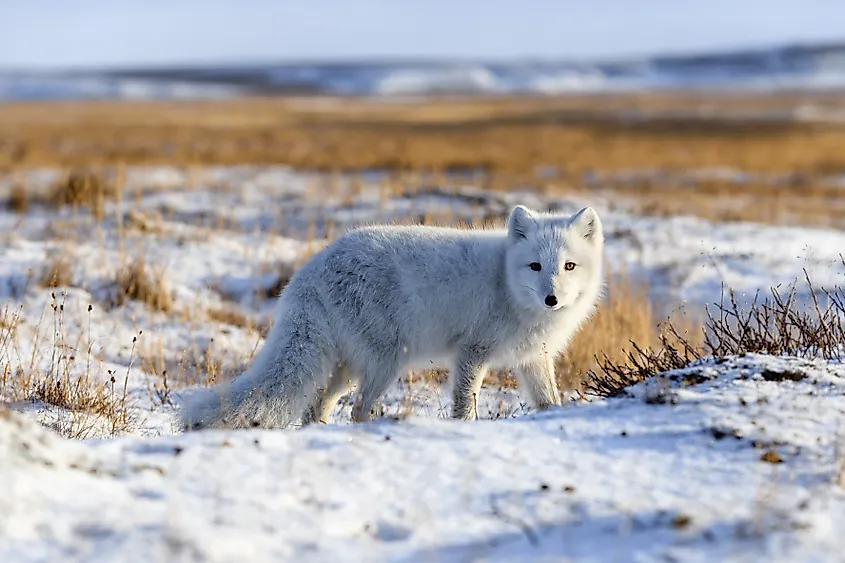
The Arctic fox inhabits the tundra regions of North America, Greenland, Iceland, and Eurasia, where it endures harsh cold conditions thanks to its dense white winter coat and brown or gray summer fur. Its fur-covered paws, compact body, and excellent insulation help minimize heat loss on snowy terrains. Arctic foxes hunt a variety of prey, including lemmings, birds, fish, and carrion, with their populations often fluctuating in sync with lemming populations. They travel extensive distances across frozen landscapes in search of food, making them one of the most versatile predators in the Arctic.
Musk Ox (Ovibos moschatus)
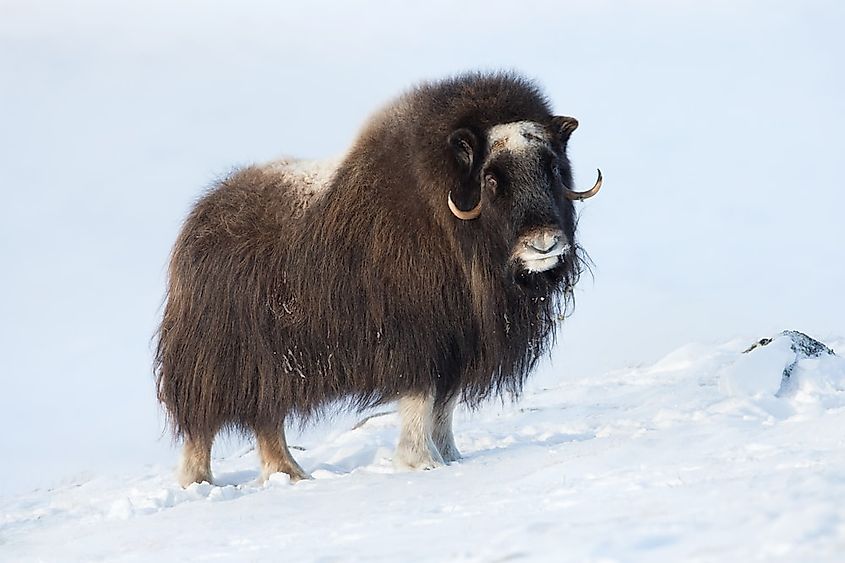
The musk ox lives year-round on the Arctic tundra of northern Canada, Greenland, and parts of Alaska. Its two-layer coat, including the soft underwool known as qiviut, provides insulation against extreme cold and high winds. Musk oxen graze on sedges, grasses, and low shrubs that grow on open tundra ground, and they survive winter by using stored body fat and digging through snow to reach vegetation. When threatened, musk oxen form a defensive circle around calves, a behavior that helps them deter wolves in the wide, treeless tundra.
Snowy Owl (Bubo scandiacus)
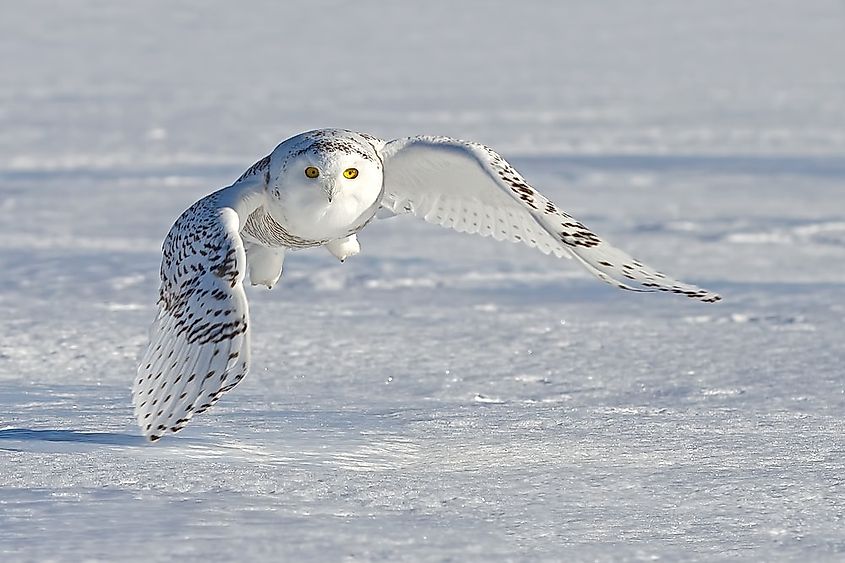
The snowy owl lives across the Arctic tundra of North America, Greenland, and Eurasia, where it nests on open ground and hunts across treeless plains. Lemmings form the core of its diet, and fluctuations in lemming numbers strongly influence breeding success and movements. Snowy owls also prey on small mammals and ground-nesting birds, making them key predators in tundra ecosystems. Their dense plumage and compact build help them withstand severe cold, while some individuals migrate south during years when Arctic prey is scarce.
Penguins (Family Spheniscidae)
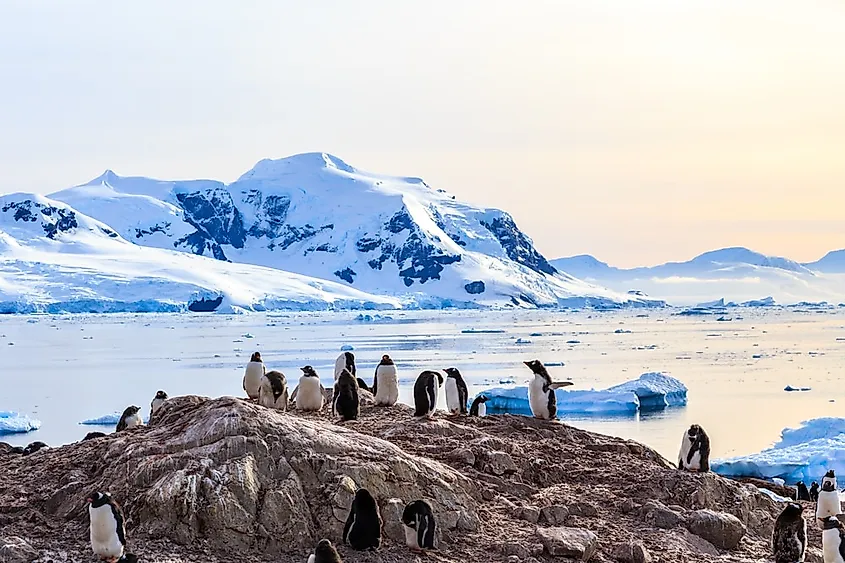
Several penguin species breed along the coast of Antarctica and nearby islands, where ice-free ground supports patches of Antarctic tundra. Emperor and Adélie penguins nest on or near the continent, while gentoo and chinstrap penguins occupy some coastal and sub-Antarctic areas. These birds depend on the cold Southern Ocean for food and use rocky shorelines and coastal plains for breeding. Their thick insulation, social behavior, and streamlined bodies allow them to survive in environments dominated by sea ice, strong winds, and short summers.
Polar Bear (Ursus maritimus)
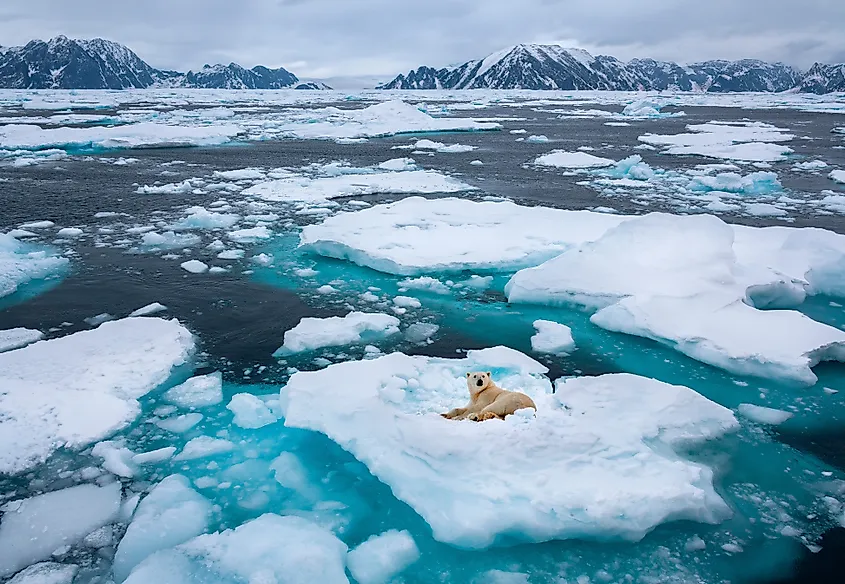
Polar bears live throughout the Arctic, using sea ice as their primary platform for hunting seals, which make up most of their diet. They come onto coastal tundra during summer ice melt, where they rest, travel, and in some regions, females dig dens in snowdrifts on tundra slopes. Polar bears are adapted to extreme cold with a thick insulating fat layer, dense fur, and strong swimming ability that allows them to travel long distances between ice floes. Their dependence on sea ice links them closely to both marine and tundra ecosystems in the far north.
Further Reading
The tundra supports a small but highly specialized group of animals that survive cold temperatures, short growing seasons, and limited vegetation. Species such as the Arctic hare, lemming, musk ox, Arctic fox, snowy owl, and polar bear rely on adaptations that help them endure long winters, scarce food, and open landscapes with little shelter. Many of these species play central roles in Arctic and alpine food webs, shaping how tundra ecosystems function across the Northern Hemisphere and high mountain regions.
For more on life in cold environments and the places where these species live, explore related articles on WorldAtlas:
- Arctic Tundra – More on the climate, vegetation, and wildlife that define the Arctic tundra biome across the far north.
- Antarctic Ecosystems – A look at the unique animals and environmental conditions that shape life on and around the Antarctic continent.
- Alpine Tundra Animals – An overview of species that live above the tree line in mountain regions where cold, wind, and short summers limit plant growth
- Arctic Fox – A detailed profile of the Arctic fox, covering its range, adaptations, diet, and ecological role in northern tundra habitats.
- Polar Bear Facts – A guide to the polar bear’s biology, range, hunting behavior, and dependence on sea ice in the Arctic.
- Animals That Live in the Coldest Places on Earth – A survey of mammals, birds, and marine life adapted to extreme cold across both polar regions.
- Arctic Region Overview – A broad explanation of the geography, climate, and ecological features of the Arctic region.
